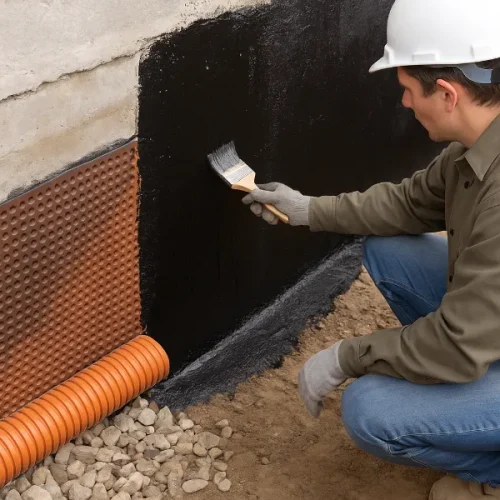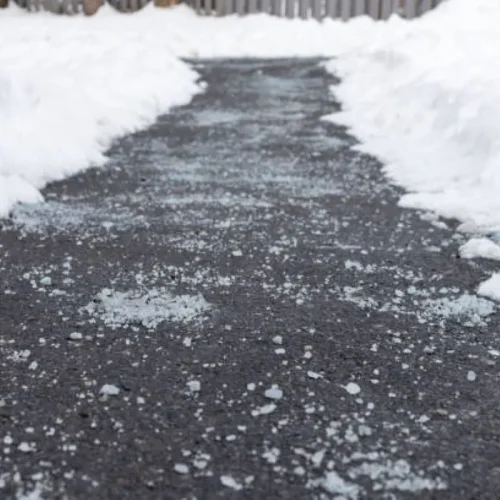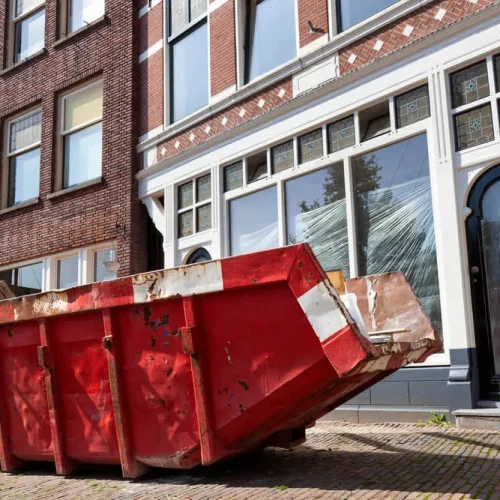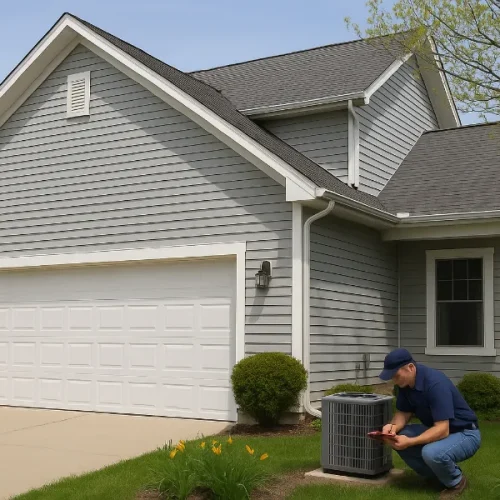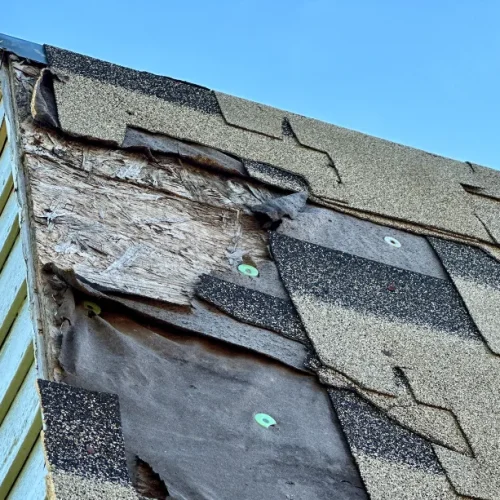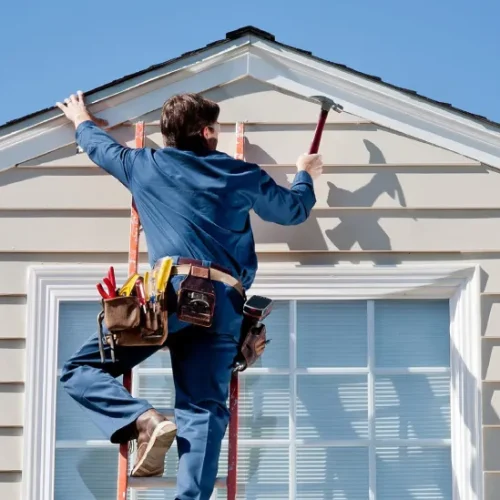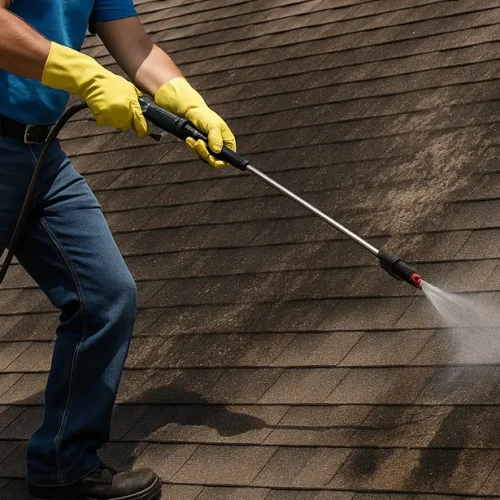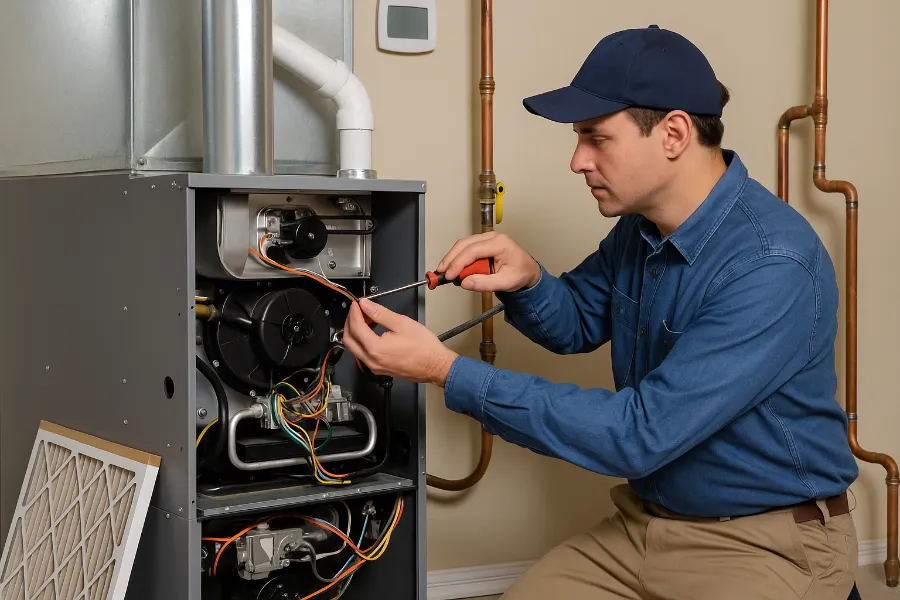
Your furnace maintains a safe and comfortable indoor temperature during the colder months by providing reliable heat. Its performance can be affected by issues such as a malfunctioning thermostat or damaged heating components. Furnace repair is the process of restoring proper operation to heating systems like boilers, heat pumps, and central heating units. Here’s what to expect during a furnace repair:
System Inspection
Before your furnace repair, a technician examines the condition of your heat system for an accurate diagnosis. The technician will inspect your furnace for visible damage, such as cracks or leaks, and examine its internal components. They may also ask if you’ve noticed any recent issues with your heating system. The inspection usually includes checking key parts like the filters, blower motor, and thermostat.
The inspection helps identify the source of your furnace issue. Sharing specific details, like unusual noises or inconsistent heating, can help your technician diagnose the problem more accurately. Preparing a brief list of these symptoms can also be useful. During the visit, the technician may run tests to address performance or efficiency concerns.
Problem Diagnosis
Once the technician has reviewed the symptoms, they’ll begin diagnosing the specific cause of the problem. This includes checking key components like the thermostat, heat exchanger, blower motor, and burners, along with tests for gas leaks, electrical issues, and airflow levels. Professional technicians use advanced tools, such as digital multimeters, to pinpoint issues accurately. Be sure to mention any changes you’ve noticed, as it can help guide the diagnostic process.
Repair Discussion
The repair process will depend on the specific issue affecting your furnace. Your technician will walk you through the steps they plan to take, explaining the tools and methods involved. This helps you understand how the repair will improve the system’s performance and reliability.
If additional problems are discovered during the repair, the technician will explain what needs to be addressed and how it impacts the system as a whole. They’ll also clarify why certain materials or techniques are being used. This level of communication helps you stay informed throughout the process and understand the value of the work being done.
Parts Replacement
If your furnace continues to fail, certain components may need replacement to restore performance and extend its lifespan. The technician will identify worn or damaged parts, such as a cracked heat exchanger, failing blower motor, or corroded burners, and explain how each one affects the system. They’ll offer replacement options. They also outline differences in brand, quality, and warranty so that you will make an informed decision.
Replacing faulty parts can improve airflow, reduce energy use, and prevent breakdowns. The technician may also explain how components like the thermostat and control board work together, helping you understand potential warning signs in the future. Regular part replacement and maintenance can help increase the lifespan of your heating system.
System Testing
After a furnace repair, the technician will run a series of tests to confirm that the system is operating correctly. This includes checking airflow levels, verifying thermostat settings, and making sure you have a consistent temperature throughout your home. The technician will also look for warning signs such as unusual noises or gas and water leaks. Identifying these early can prevent larger problems down the line.
Invest in Professional Furnace Repair
Working with a heating repair company will help simplify your heating system maintenance. Professional repair companies have qualified staff who can detect and correct any issue in your heater and offer the necessary replacement parts. Work with a reliable HVAC company to help you keep your heating and cooling system in proper working condition throughout the year.

